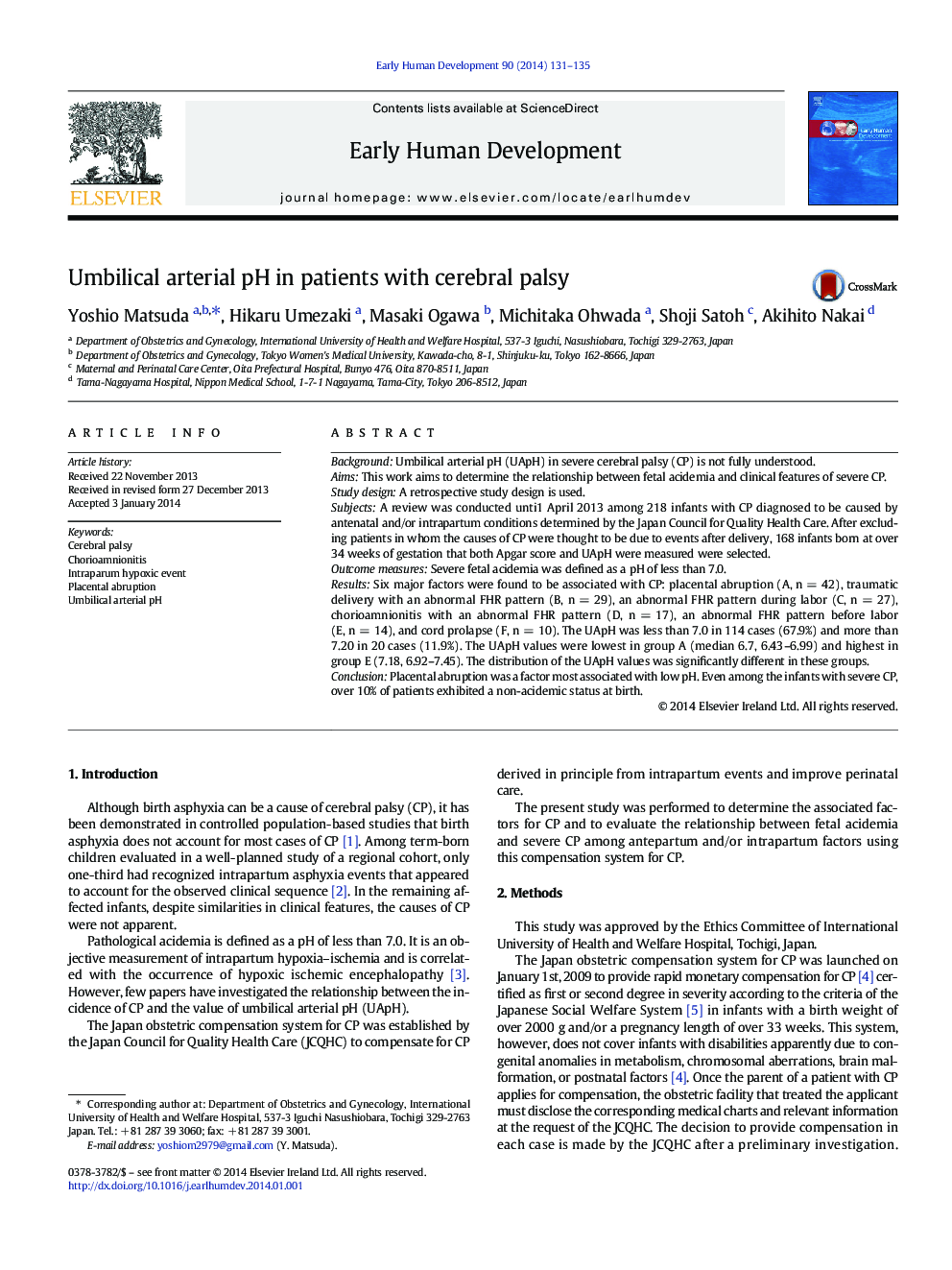| Article ID | Journal | Published Year | Pages | File Type |
|---|---|---|---|---|
| 3918033 | Early Human Development | 2014 | 5 Pages |
BackgroundUmbilical arterial pH (UApH) in severe cerebral palsy (CP) is not fully understood.AimsThis work aims to determine the relationship between fetal acidemia and clinical features of severe CP.Study designA retrospective study design is used.SubjectsA review was conducted unti1 April 2013 among 218 infants with CP diagnosed to be caused by antenatal and/or intrapartum conditions determined by the Japan Council for Quality Health Care. After excluding patients in whom the causes of CP were thought to be due to events after delivery, 168 infants born at over 34 weeks of gestation that both Apgar score and UApH were measured were selected.Outcome measuresSevere fetal acidemia was defined as a pH of less than 7.0.ResultsSix major factors were found to be associated with CP: placental abruption (A, n = 42), traumatic delivery with an abnormal FHR pattern (B, n = 29), an abnormal FHR pattern during labor (C, n = 27), chorioamnionitis with an abnormal FHR pattern (D, n = 17), an abnormal FHR pattern before labor (E, n = 14), and cord prolapse (F, n = 10). The UApH was less than 7.0 in 114 cases (67.9%) and more than 7.20 in 20 cases (11.9%). The UApH values were lowest in group A (median 6.7, 6.43–6.99) and highest in group E (7.18, 6.92–7.45). The distribution of the UApH values was significantly different in these groups.ConclusionPlacental abruption was a factor most associated with low pH. Even among the infants with severe CP, over 10% of patients exhibited a non-acidemic status at birth.
